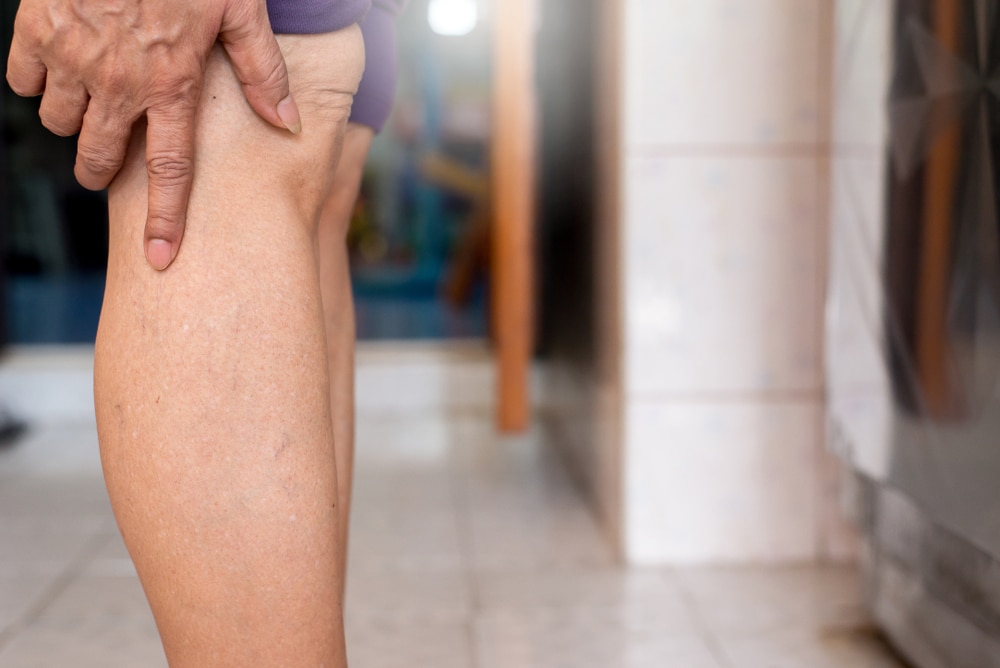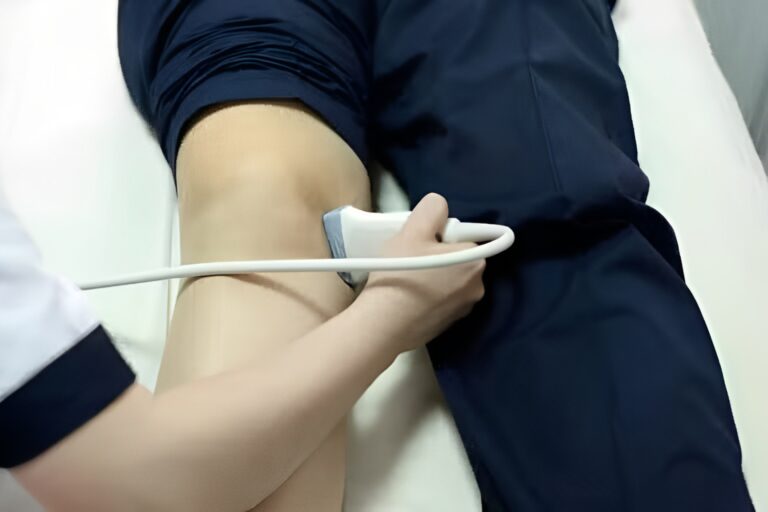When it comes to maintaining optimal vein health, understanding the causes, symptoms, and treatment options for venous reflux disease is crucial. St. Louis vein treatment offers effective solutions for managing this common condition affecting leg veins. In this comprehensive guide, we will explore the intricacies of venous reflux disease, providing you with the knowledge needed to make informed decisions about your vein health.
What is Venous Reflux Disease?
Venous reflux disease, also known as chronic venous insufficiency (CVI), is a condition that affects the leg veins. It occurs when the normal mechanisms that assist in pushing blood back to the heart, such as the vein valves and the pumping action of the calf muscles, are compromised. As a result, blood flow becomes turbulent, causing it to back up and, in some case s, flow in reverse.
Venous reflux disease can progress over time, leading to venous insufficiency, a chronic condition characterized by insufficient blood flow in the veins. The terms “venous reflux” and “venous insufficiency” are often used interchangeably to describe this condition, which can cause a range of painful symptoms and complications.

Causes of Venous Reflux Disease
Several factors contribute to the development of venous reflux disease. While increased venous blood pressure is a direct cause of the condition, there are underlying risk factors that can elevate blood pressure in the veins. Some of the most significant causes and risk factors include:
- Family History of Varicose Veins: Genetic factors play a role in the development of venous reflux disease. Certain genes involved in regulating blood pressure and the development of the vascular system can increase the risk of weak vein valves, making individuals more susceptible to venous reflux.
- Obesity: Being overweight or obese puts additional stress on the veins, leading to chronic low-grade inflammation and impaired blood flow. Obesity is also associated with an increased risk of developing venous ulcers.
- Pregnancy: Hormonal changes during pregnancy, such as increased levels of progesterone, can make veins more expandable and hinder blood flow back to the heart. The increased blood volume and pressure from the growing baby can also contribute to venous reflux.
- Lack of Exercise: Regular exercise promotes healthy blood flow and strengthens leg muscles, which aids in proper circulation. A sedentary lifestyle can contribute to poor vein health and increase the risk of venous reflux disease.
- Smoking: Smoking damages blood vessels and reduces blood oxygen levels, leading to inflammation and impaired vein function. Female smokers may experience swelling, while male smokers may be more prone to skin changes associated with venous reflux.
- Prolonged Standing or Sitting: Extended periods of standing or sitting can impede blood flow in the legs, as the veins struggle against gravity without the assistance of muscle contractions. Both occupations that require prolonged standing and a sedentary lifestyle contribute to the risk of venous reflux disease.
- Age: As individuals age, the connective tissues in the veins weaken, leading to stiffer blood vessels and reduced flexibility. This can impair blood flow and increase the risk of venous reflux disease. Women are more likely to experience symptoms of venous insufficiency as they age compared to men.
Symptoms of Venous Reflux Disease
Venous reflux disease manifests in various symptoms that indicate impaired blood flow and increased venous pressure in the legs. These symptoms may worsen after prolonged periods of sitting or standing and improve with rest. It is essential to recognize these warning signs, as they can help identify the presence of venous reflux disease:
- Swelling: Elevated blood pressure in the leg veins causes fluid to leak out into the surrounding tissues, resulting in swelling or edema.
- Dull, Aching Pain: As blood pressure builds up in the veins, it can lead to aching and discomfort in the legs.
- Heavy Sensations: The combination of swelling and increased pressure can create a sensation of heaviness in the legs.
- Cramping: Inadequate oxygenation of leg muscles due to slowed blood flow can result in muscle cramps.
If left untreated, venous reflux disease can progress to more advanced symptoms, including:
- Varicose Veins: Swollen, twisted, and discolored veins that appear just beneath the skin’s surface, often bluish in color.
- Skin Discoloration: Increased venous pressure can cause red blood cells to be pushed out of the veins, leading to dark discoloration of the skin, particularly around the ankles.
- Venous Ulcers: Open sores that develop due to continued fluid buildup and pressure in the legs. These ulcers are often found around the ankles or shins and can take a long time to heal.
Diagnosis of Venous Reflux Disease
A proper diagnosis of venous reflux disease involves a thorough evaluation of symptoms and diagnostic tests. Healthcare professionals use various techniques to assess blood flow and the structure of the leg veins. These diagnostic procedures may include:
- Duplex Ultrasound: This non-invasive imaging test uses sound waves to create a visual representation of the veins and assess blood flow. It provides detailed information about the structure and function of the veins, helping identify any blockages or valve dysfunction.
- Magnetic Resonance Venography (MRV): MRV utilizes a combination of a large magnet, radio frequencies, and a computer to produce detailed images of the veins. It can help detect underlying causes of leg pain and evaluate the condition of the veins.
Once a diagnosis of venous reflux disease is confirmed, healthcare providers can develop an appropriate treatment plan tailored to the individual’s needs.
Treatment Options for Venous Reflux Disease
The goal of St. Louis vein treatment for venous reflux disease is to reduce symptoms, improve blood flow, and prevent complications. Treatment options include both conservative measures and medical interventions:
- Conservative Measures:
- Elevating the Legs: Raising the legs above the heart level helps promote better blood flow and decrease swelling. Elevating the legs during periods of rest can provide relief from symptoms.
- Exercise: Regular exercise that engages the calf muscles can improve blood flow and strengthen the veins. Activities such as walking, cycling, and swimming promote healthy circulation.
- Compression Stockings: These specially designed stockings provide graduated compression, exerting the most pressure at the ankles and gradually decreasing pressure as they move up the leg. Compression stockings help improve blood flow and reduce swelling.
- Medical Interventions:
- Endovenous Laser Ablation (EVLA): This minimally invasive procedure involves using laser energy to seal off the affected vein, redirecting blood flow to healthier veins. EVLA is effective in treating venous reflux and can provide long-lasting symptom relief.
- Sclerotherapy: In this procedure, a chemical solution is injected into the affected vein, causing it to collapse and be reabsorbed by the body. Sclerotherapy is commonly used to treat varicose veins and can improve symptoms associated with venous reflux.
- Vein Stripping: Vein stripping is a surgical procedure that involves removing the affected vein from the leg. It is typically reserved for severe cases of venous reflux that do not respond to other treatments.
- Phlebectomy: In this procedure, small incisions are made to remove varicose veins near the surface of the skin. Phlebectomy can provide symptomatic relief and improve the appearance of the legs.
- Radiofrequency Ablation: Radiofrequency ablation uses thermal energy to heat and close off the affected vein. This procedure is performed using a catheter inserted into the vein, providing a minimally invasive alternative to surgical vein removal.
Prevention and Maintenance of Vein Health
In addition to seeking appropriate treatment for venous reflux disease, maintaining vein health is crucial. Here are some preventive measures and lifestyle changes that can promote optimal vein function:
- Maintain a Healthy Weight: Obesity puts additional strain on the veins, increasing the risk of venous reflux disease. Maintaining a healthy weight through a balanced diet and regular exercise can reduce the burden on the veins.
- Exercise Regularly: Engaging in regular physical activity, particularly exercises that target the legs, can improve blood flow and strengthen the calf muscles. Walking, biking, and swimming are excellent choices for promoting healthy circulation.
- Avoid Prolonged Sitting or Standing: If your occupation requires prolonged periods of sitting or standing, take regular breaks to move and stretch your legs. This can help prevent blood pooling and reduce the risk of venous reflux.
- Elevate Your Legs: Whenever possible, elevate your legs above heart level to facilitate blood flow back to the heart and reduce swelling.
- Wear Compression Stockings: If you are prone to venous reflux or have a family history of vein issues, wearing compression stockings can provide support and improve blood flow in the legs.
- Quit Smoking: Smoking damages blood vessels and impairs circulation. Quitting smoking can significantly improve overall vein health.
Seeking St. Louis Vein Treatment
If you are experiencing symptoms indicative of venous reflux disease or have concerns about your vein health, it is crucial to seek professional evaluation and treatment. St. Louis vein treatment specialists can provide a comprehensive assessment and develop a personalized treatment plan to address your specific needs.
By understanding the causes, symptoms, and treatment options for venous reflux disease, you can take proactive steps to manage your vein health and improve your overall well-being. Don’t let venous reflux disease hinder your quality of life – take control and seek the appropriate treatment today.


